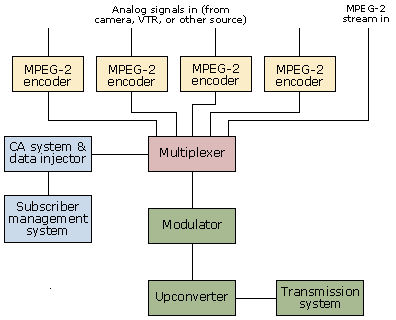This is what I thought ...Where I work, DirecTV has a fiber feed and uses OTA as a backup. Comparing the two signals, I don't see any difference, and wouldn't expect to as they are both the same ~14 Mbps feed from the encoder. The subchannels on the OTA signal also affect what is sent through the fiber.
Whether a local station's broadcast MPEG-2 transport stream is sent in ASI format by fiber links to the MVPDs. Or received by them OTA in ATSC format, the PQ should be identical.
Therefore, the subscribers should also see either the same PQ in comparison to OTA, or else somewhat poorer from the MVPDs due to their re-compression of the individual broadcast streams into MPEG-4 format.




